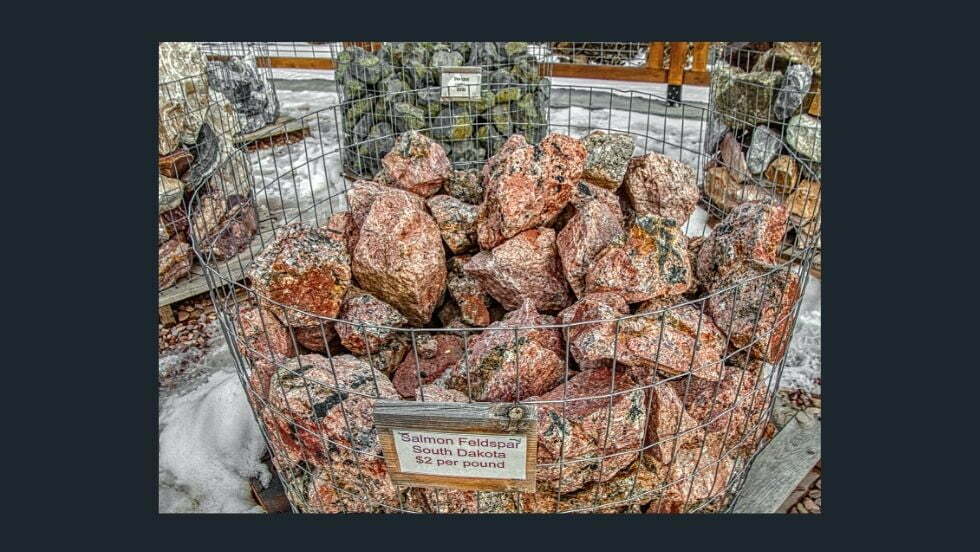There is a group of minerals called aluminosilicate, and feldspar belongs to this group. This mineral containing sodium, calcium, and potassium contributes to more than 50% of the earth’s crust. Some professional journals regarding it make up a large amount of what is written in the mineralogy literature. Find out in-depth information on the mineral below.
Interesting Facts
Feldspars are present in all rock divisions. They are most likely to be part of igneous rocks, indicating that these rocks resulted from the crystallization process from magma. Feldspar-bearing rocks that experience physical weathering may cause the occurrence of sediments as well as sedimentary rocks containing the minerals. However, it is rare as nature tends to alter the minerals into other substances, like clay minerals.
There is only less than 0.1% contributing to the earth’s mantle and crust, out of over 3,000 mineral types. Feldspar and some other minerals are the most significant element of the earth’s surface. Every general rock formed from minerals can be classified based on its composition and crystal structure (its ion and atom arrangement).
Furthermore, optical properties are also what is required to identify types of rock. However, it takes rather expensive, sophisticated equipment and procedures for such determinations. Hence, fortunately, a macroscopic examination and a couple of tests are enough to identify the minerals once they occur in many rocks.
The Types of Feldspar

Based on the research conducted by the International Union of Geological Sciences, feldspars are divided into two classes: plagioclase and alkali. The plagioclase feldspars consist of a series of albite-anorthite—both in solid and liquid versions. Meanwhile, the alkali includes microcline, orthoclase, sanidine, perthite, and anorthoclase.
Plenty of perthites are transformed once proper chemical compositions of sodium-potassium feldspars in high temperature are being cooled in a way that the real solid-solution version separates itself into two or more various minerals. It is also a process of forming intermixtures of two versions/phases of a mineral.
Nonetheless, perthites seem to have been transformed by a separate replacement of the first form of potassium feldspars and fluids that contain sodium. In most cases, perthite is a proper name applied to close mixtures where potassium feldspars take over the entire plagioclase element.
On the other hand, antiperthite is a given name to the intimate mixtures where the plagioclase element is predominating. While perthites can be commonly found in a layer of rocks, anti perthites are rather rare to find.
Chemical Composition
The feldspar variant forms into rocks are aluminosilicate minerals with AT4O8 as the formula (A means sodium, potassium, or calcium, T means silicon and aluminum, with a ratio ranging between 1:1 and 3:1). In the meantime, orthoclase and microcline are potassium feldspars represented in KAISi3O8.
Albite, usually designated as Ab, is shown in the formula of NaAlSi3O8, while anorthite is designated as An and represented in CaAl2Si2O8. They are both the end-members in the series of plagioclase classes. Perthites, sanidine and anorthoclase are included in alkali feldspars whose compositions lie between Ab and Or.
How to Distinguish between All the Types
These minerals, especially those of Alkali, are usually differentiated from plagioclase because the latter have grains that look twinned with albite. Some parallel lines manifest albite on specific surfaces of its chemical process. Meanwhile, it does not happen to the grains of alkali feldspars. Regardless of that situation, it is not an absolute criterion—some plagioclase does not poly synthetically resemble albite.
Another method occasionally used to differentiate between plagioclase and alkali feldspars is their distinct specific values of gravity. The value ideally for the potassium-rich minerals is 2.56. It is lower than the lowest plagioclase value (2.62 for albite).
Looking typically glossy, sanidine can be more easily distinguished from the other alkali feldspars—it tends to appear with no color and is transparent. On the other hand, orthoclase and microcline are characteristically white, salmon, light gray, or sub-translucent. Exceptionally, for amazonite or amazonstone, its green variety, microcline, is hardly distinguished from orthoclase.
The Uses of the Mineral

Speaking of the uses, feldspars are widely used in the ceramics and glass industries. For commercial use, alkali feldspars are more likely to be used than plagioclase. Albite—or commercially known as soda spar—is commonly used in ceramics. Meanwhile, larvikite, the rocks rich in feldspar, and a few variants of anorthosites are more specialized as either interior or exterior tiles.
Moreover, several feldspars are formed into gemstones. For instance, varieties showing opalescence are commercially offered as moonstone. Labradorite or also more popular with Spectrolite, is used in tiles with strong flashes of color. Oligoclase or orthoclase that is more well known as Sunstone is typically a range of yellow, orange and brown along with a golden glow. The glow effect is a result of reflections from red hematite inclusions.
Amazonite, a green microcline version, is generally used as a decorative material. On the other hand, sanidine is turned into phenocrysts, large significant crystals found in extrusive igneous rocks, including trachyte and rhyolite. It indicates the rocks rapidly cooled once they erupted from a volcano. Furthermore, sanidine is also used as the high-temperature contact metamorphism indicator.
Conclusion
Coming from a group of minerals called aluminosilicate, feldspars constitute more than 50% of the planet’s crust. The chemical compositions of this mineral are KAlSi3O8 – NaAlSi3O8 – CaAl2Si2O8. Feldspars are widely known grouped into two: the alkali and the plagioclase. The plagioclase feldspars consist of a series of albite-anorthite—both in solid and liquid versions. In the meantime, the alkali includes microcline, orthoclase, sanidine, perthite, and anorthoclase.
Traditionally, feldspar is one of the three categories of commercially used ceramics—along with silica and clay. Alkali feldspars are the most used for tiling. Others are used for ornament materials and high-temperature indicators. In distinguishing all the types of the mineral, it requires optical properties—which is certainly expensive and rather complex. It is indeed a rock-forming mineral that takes quite a large part of the human race’s life.


Recent Comments